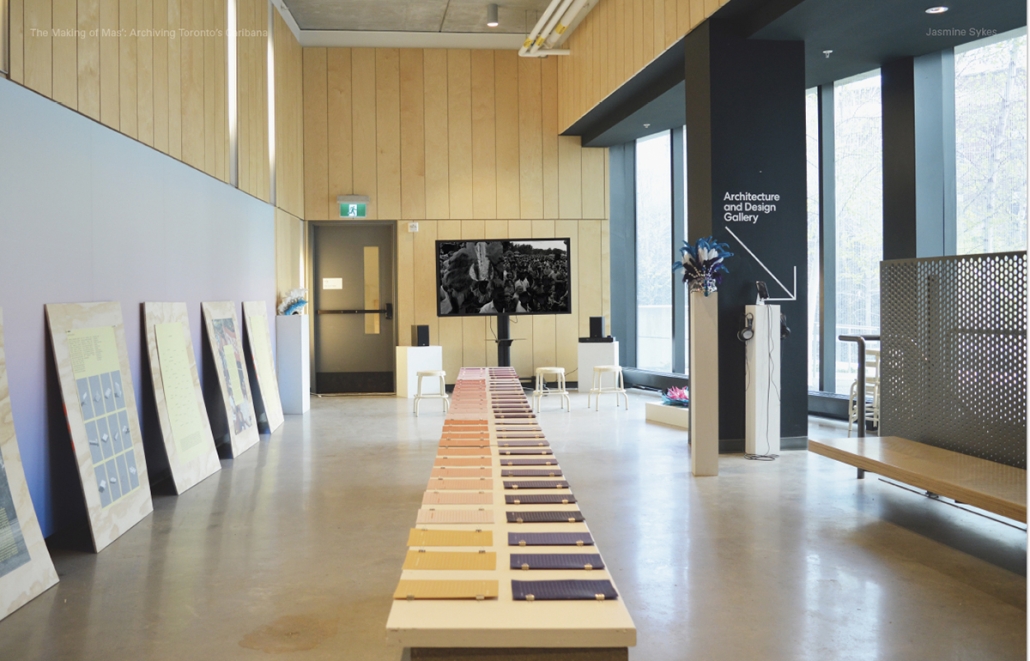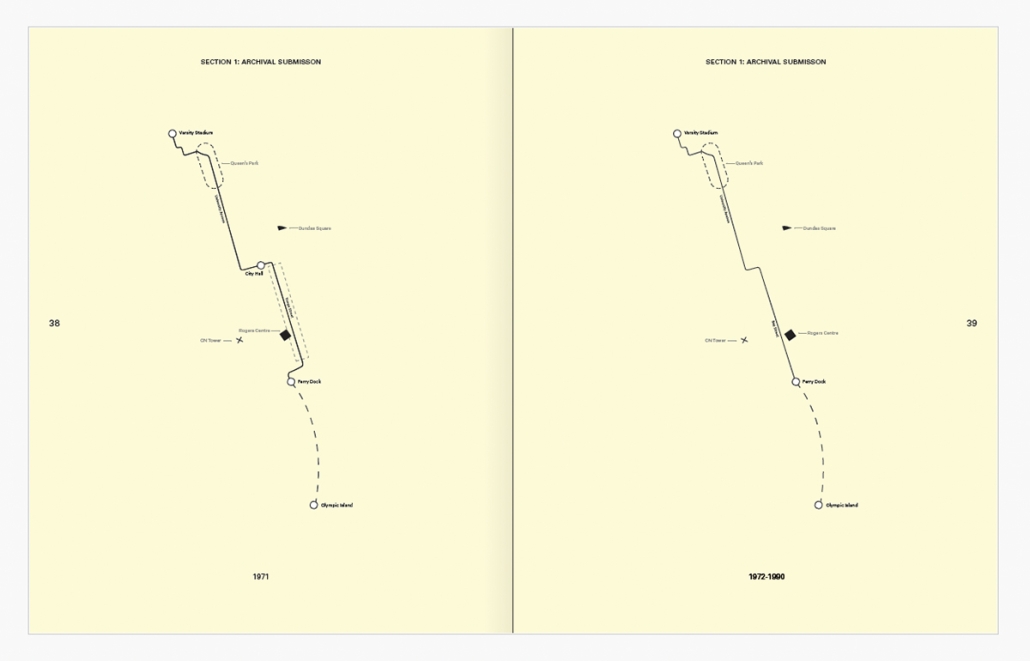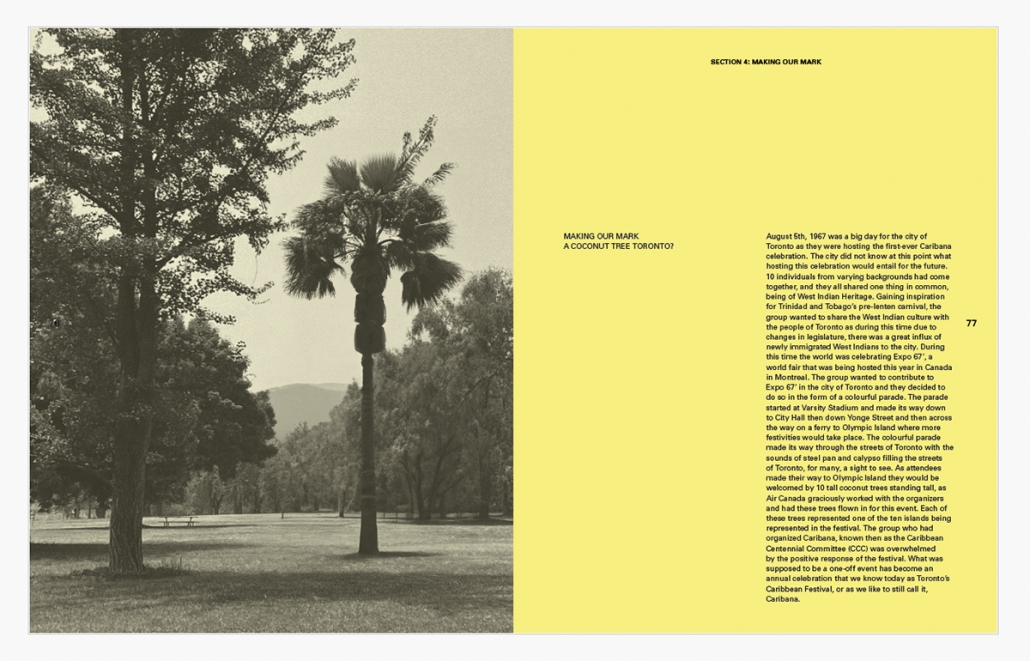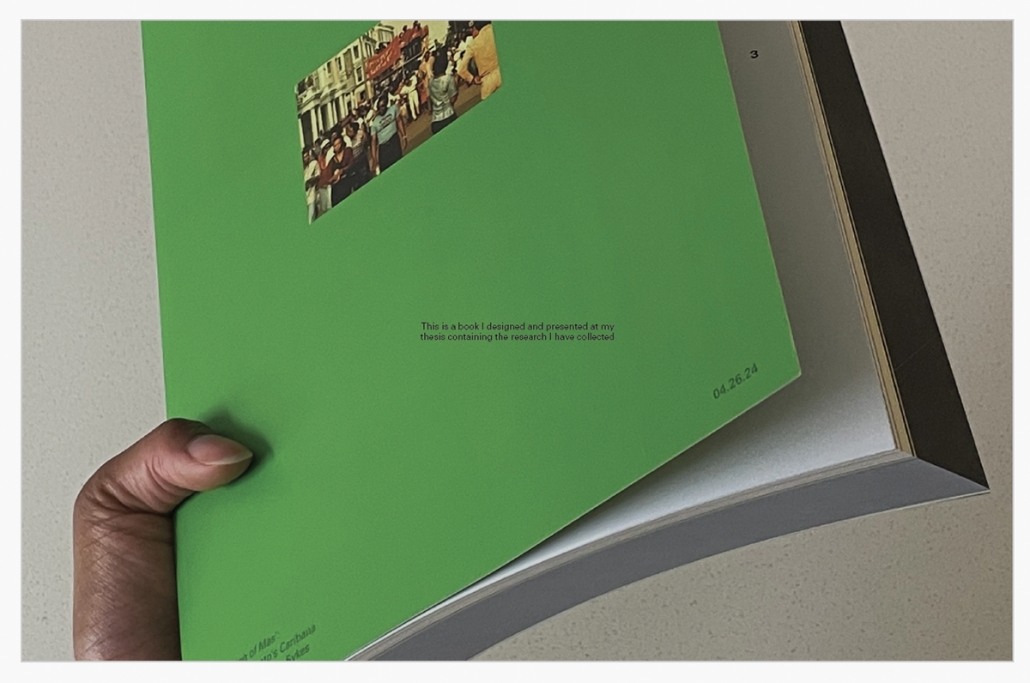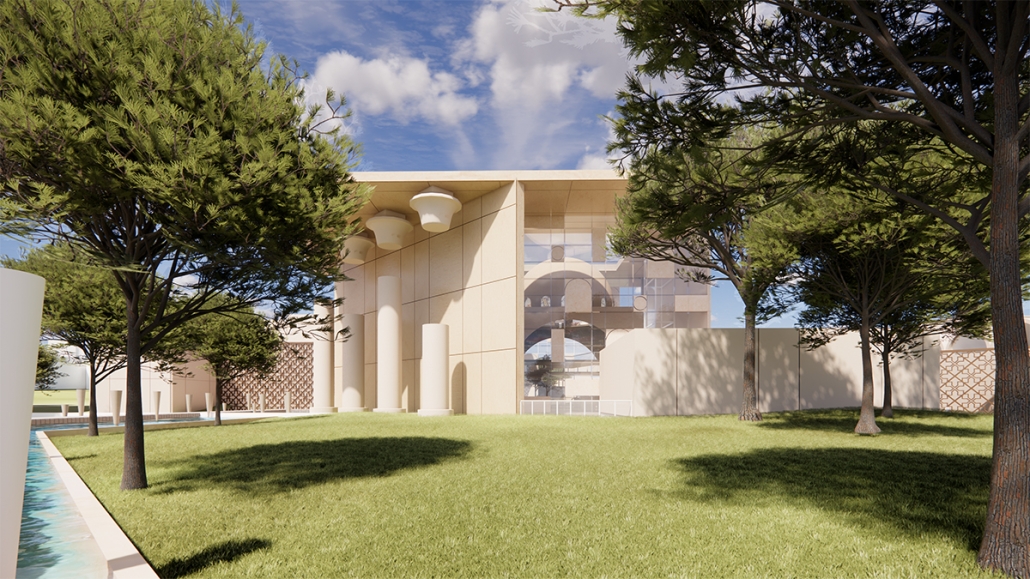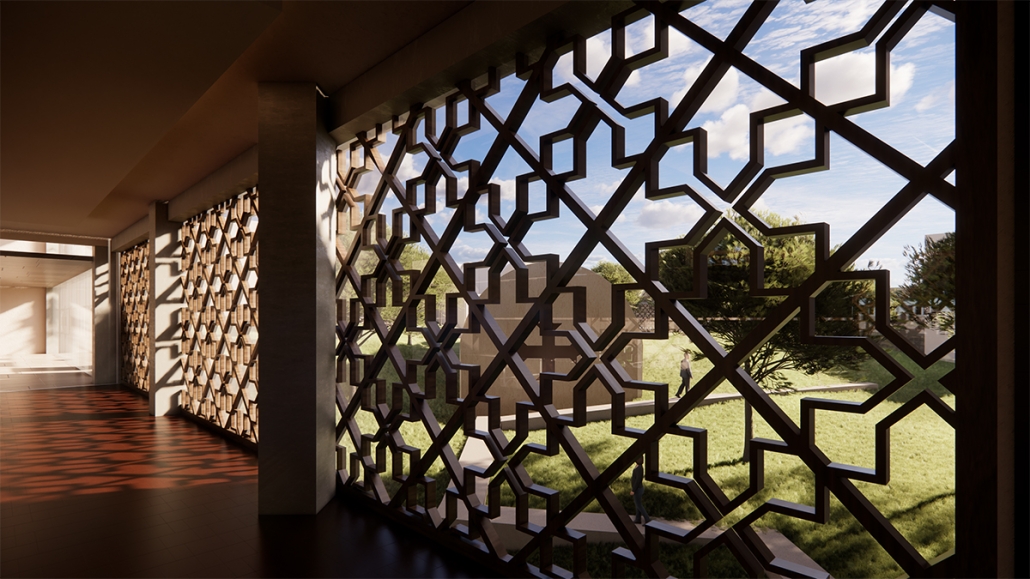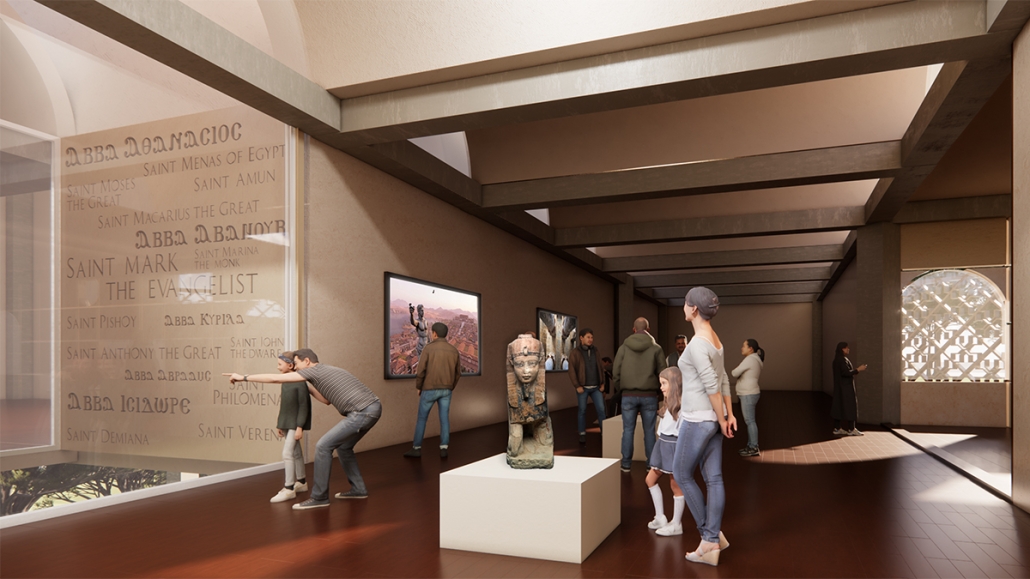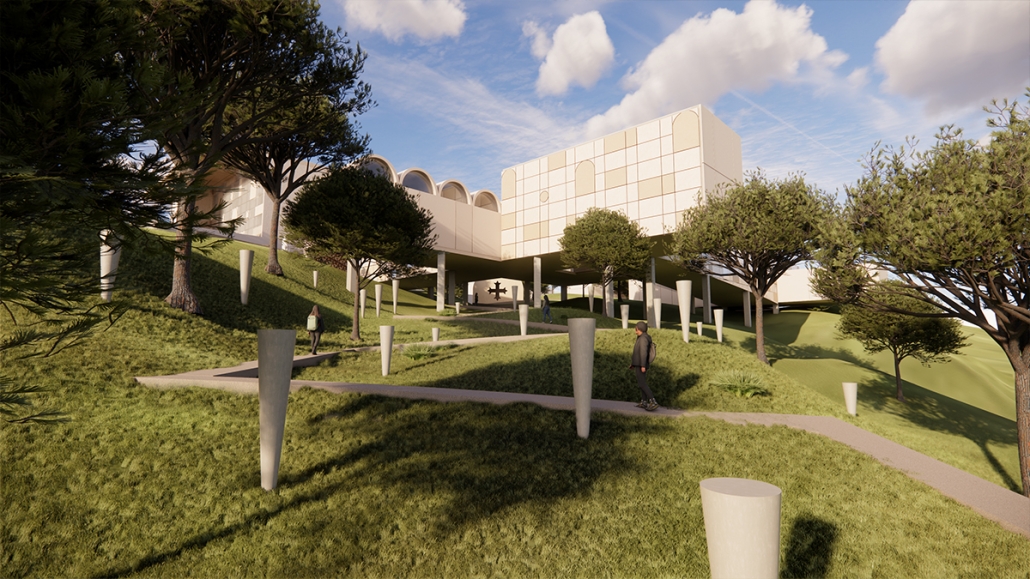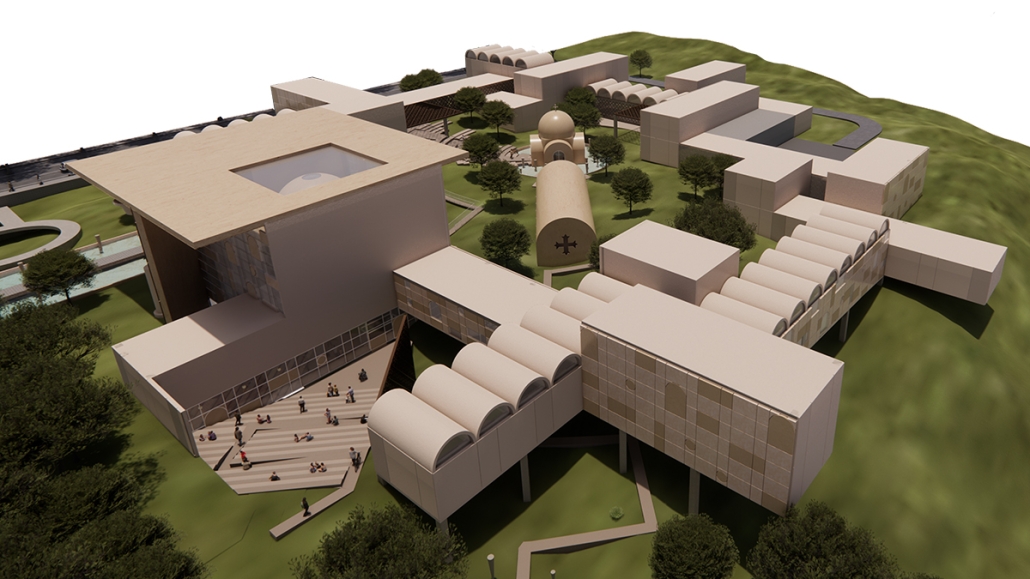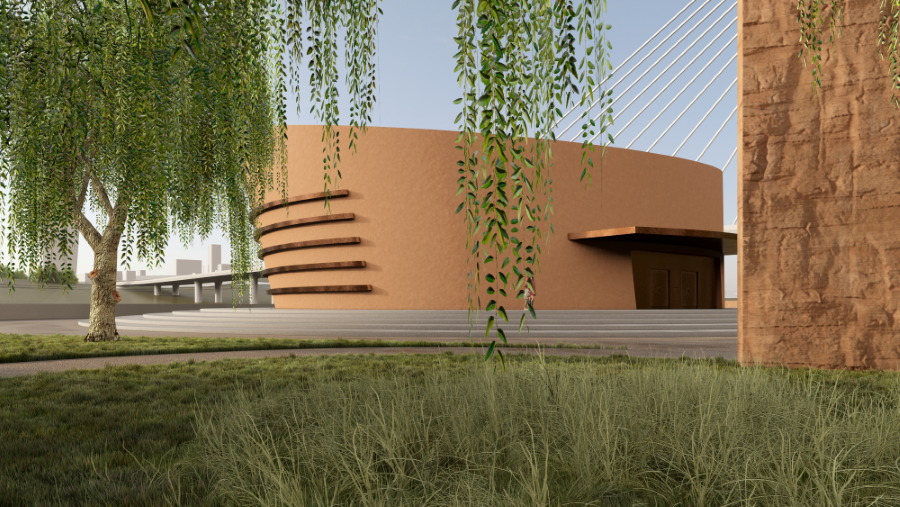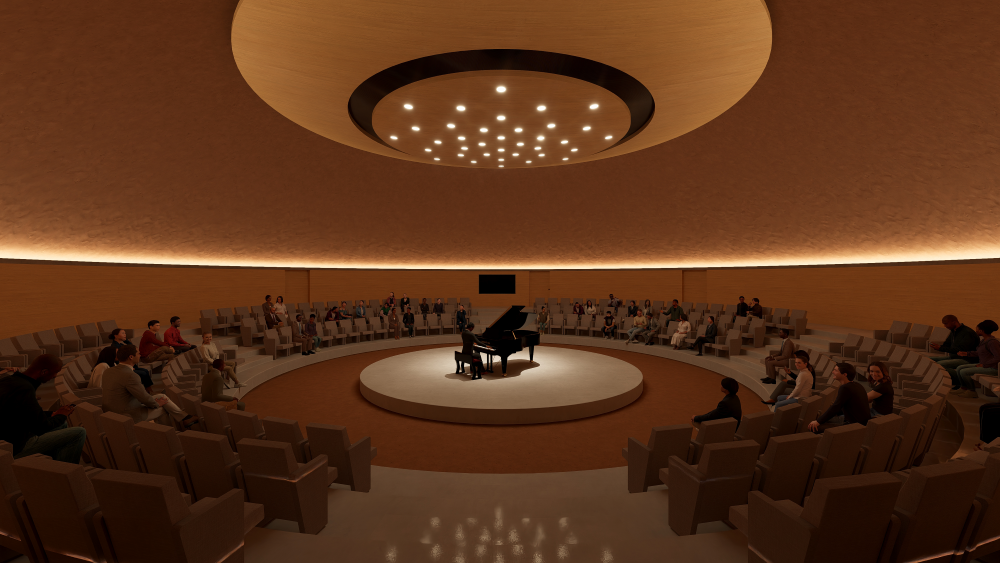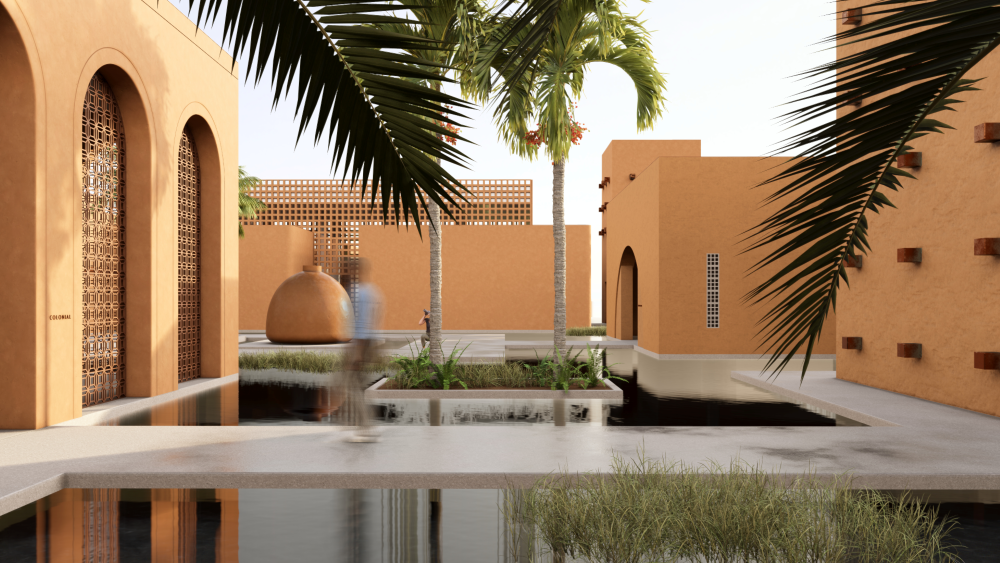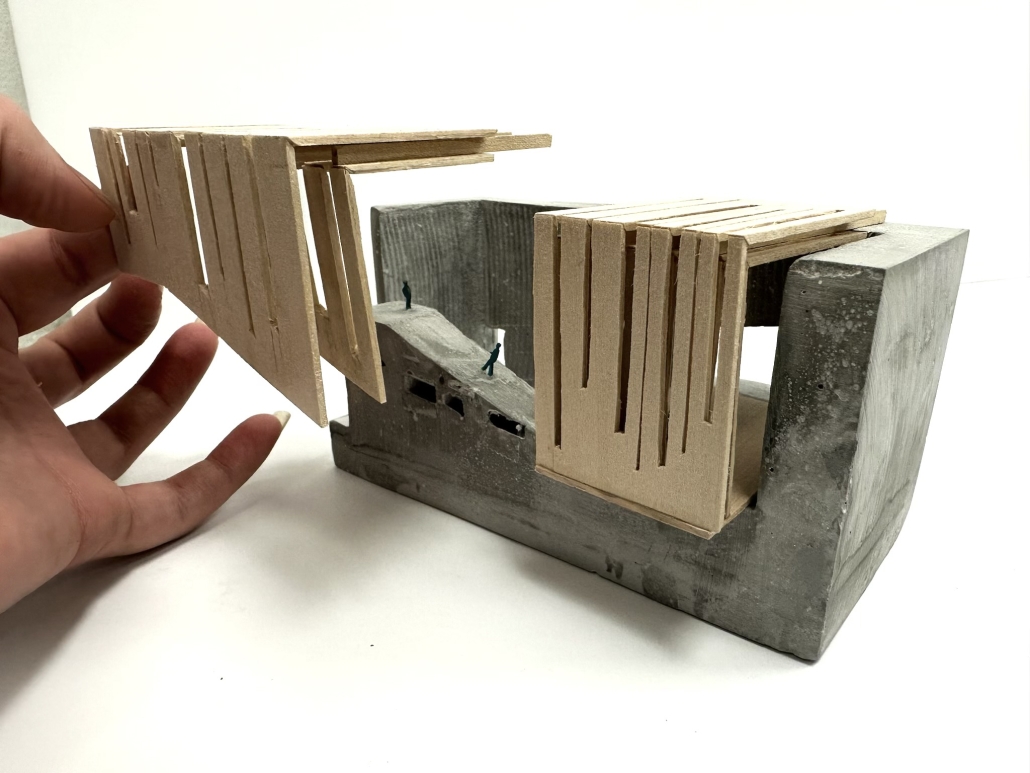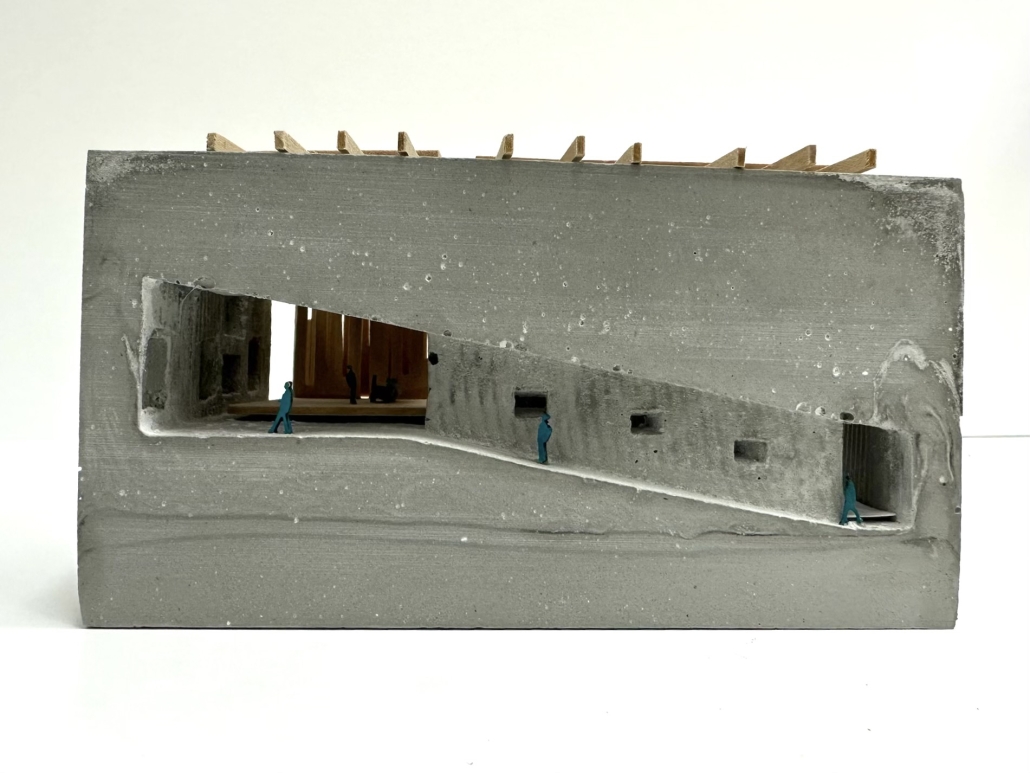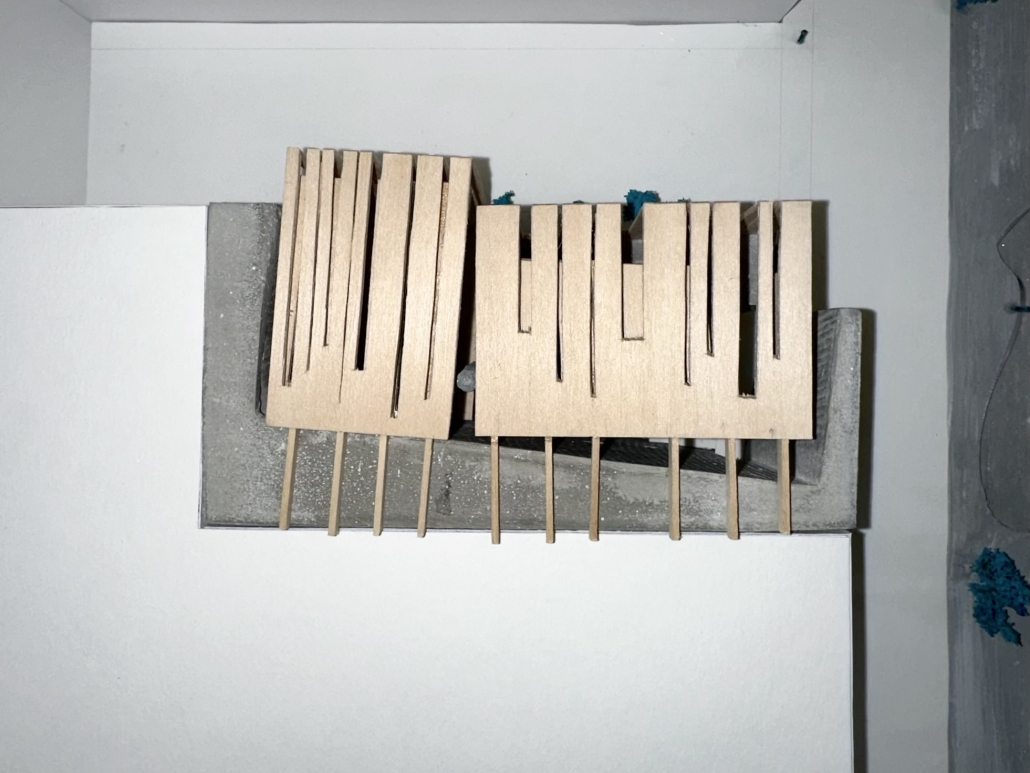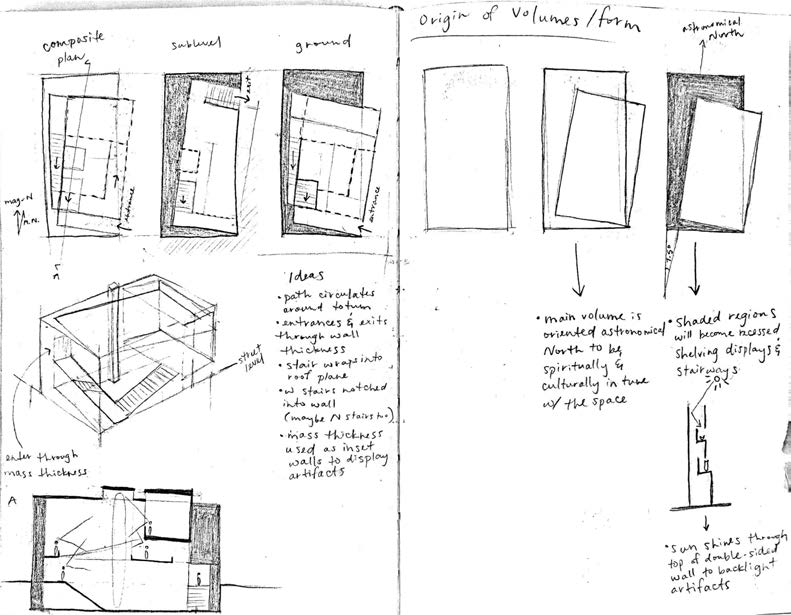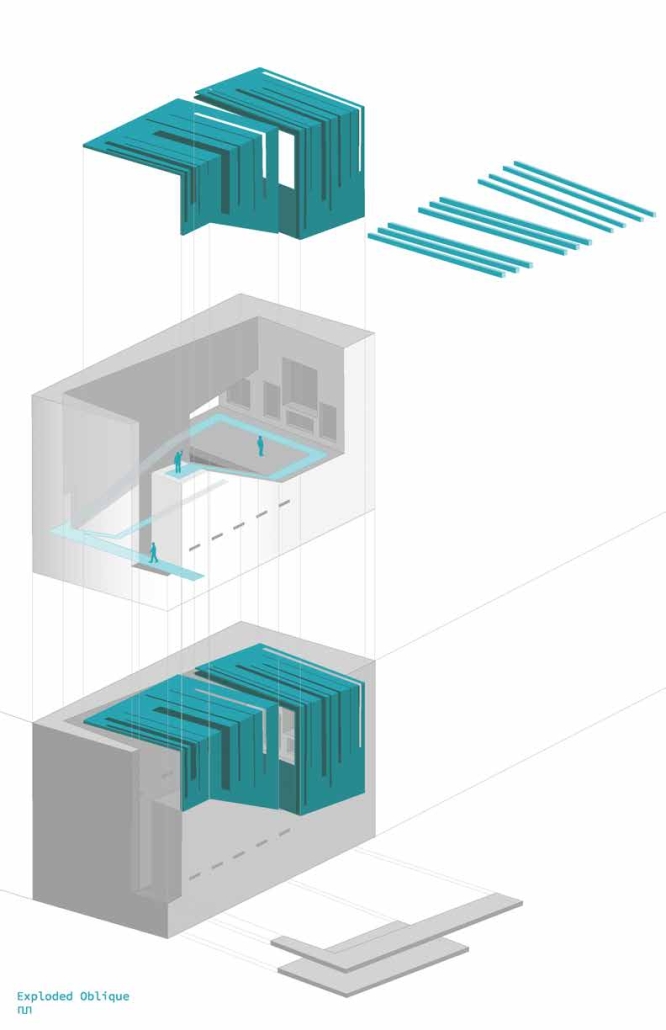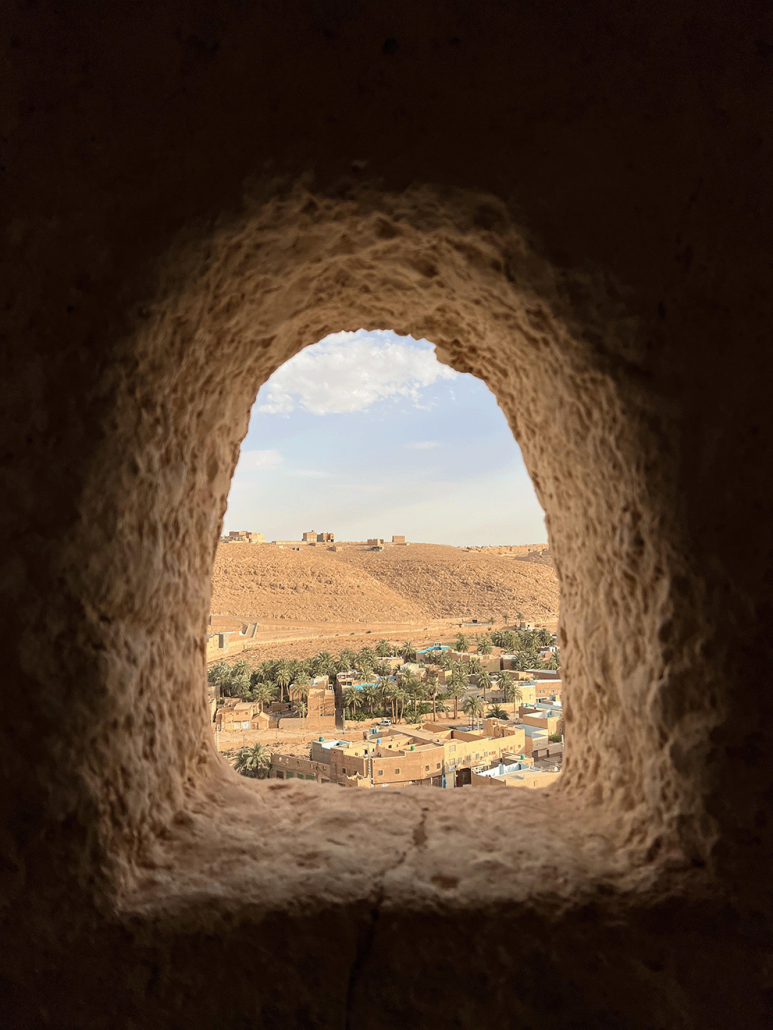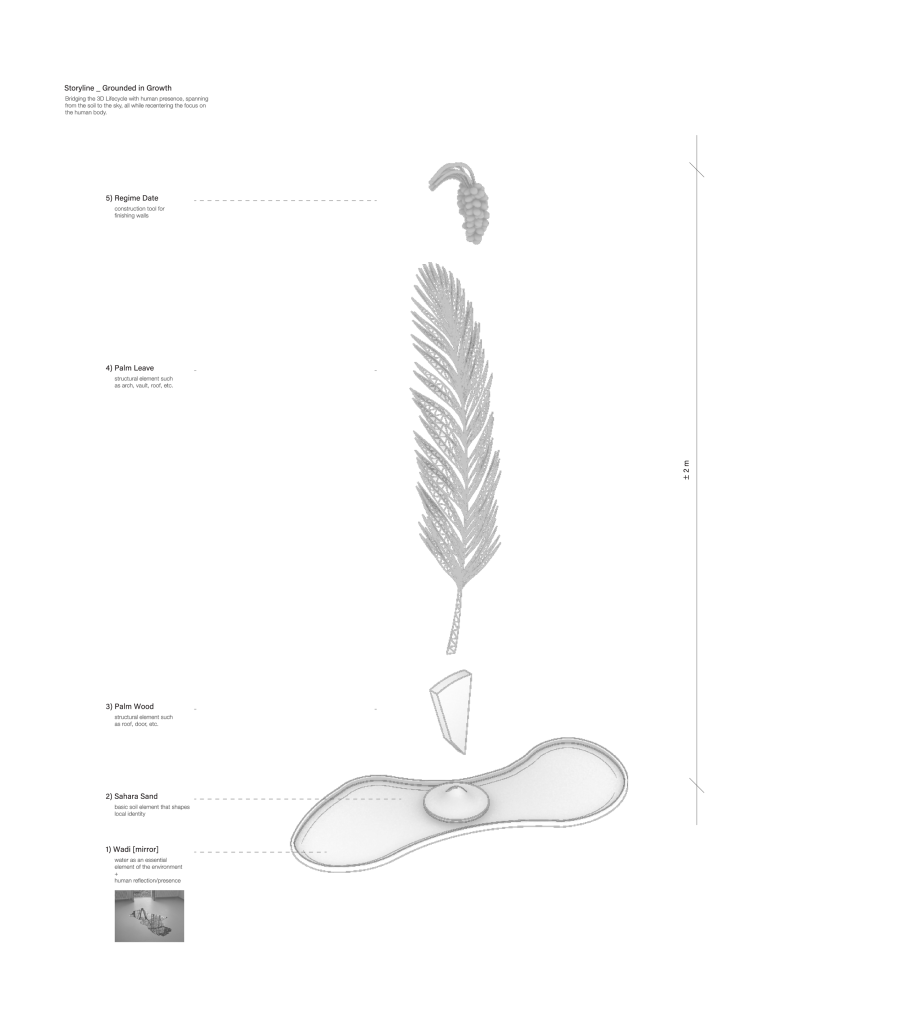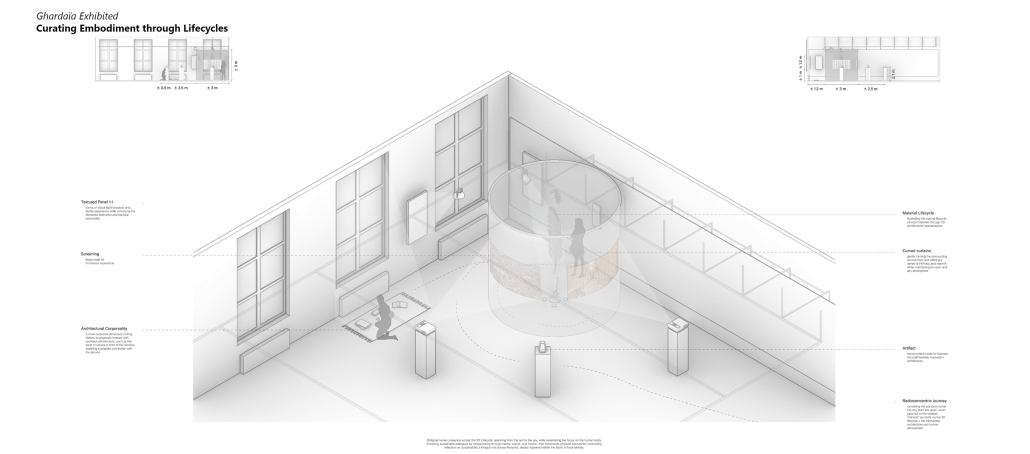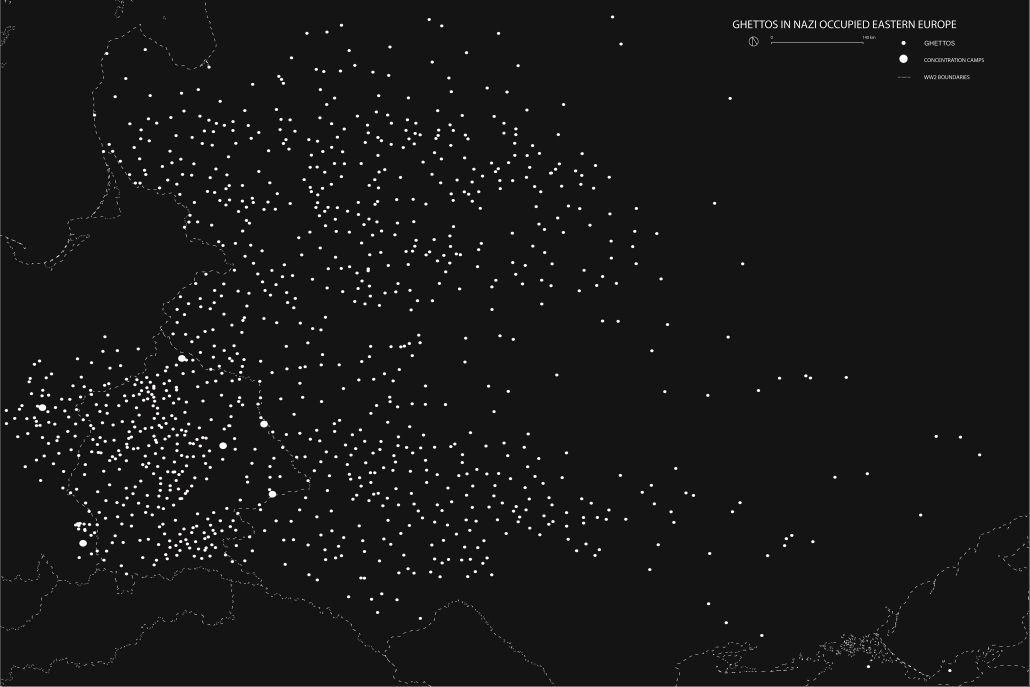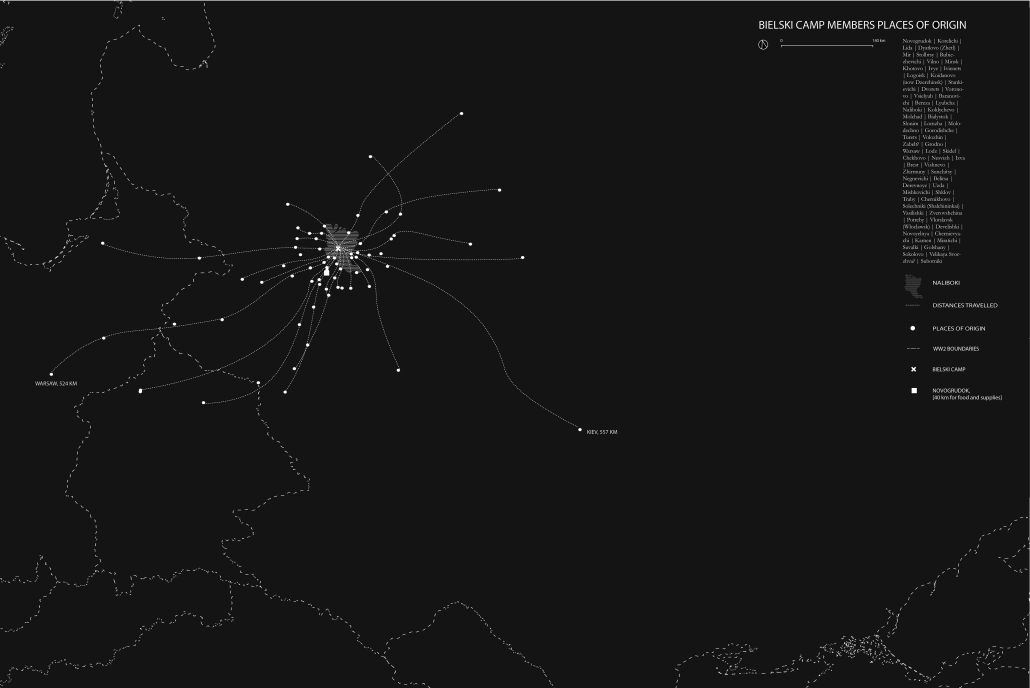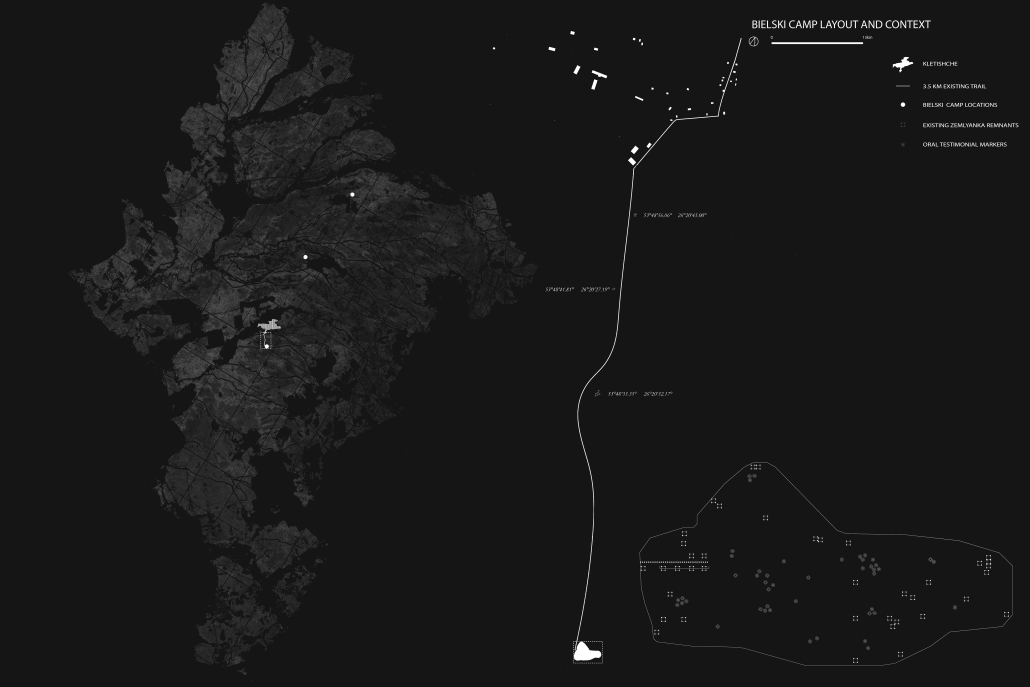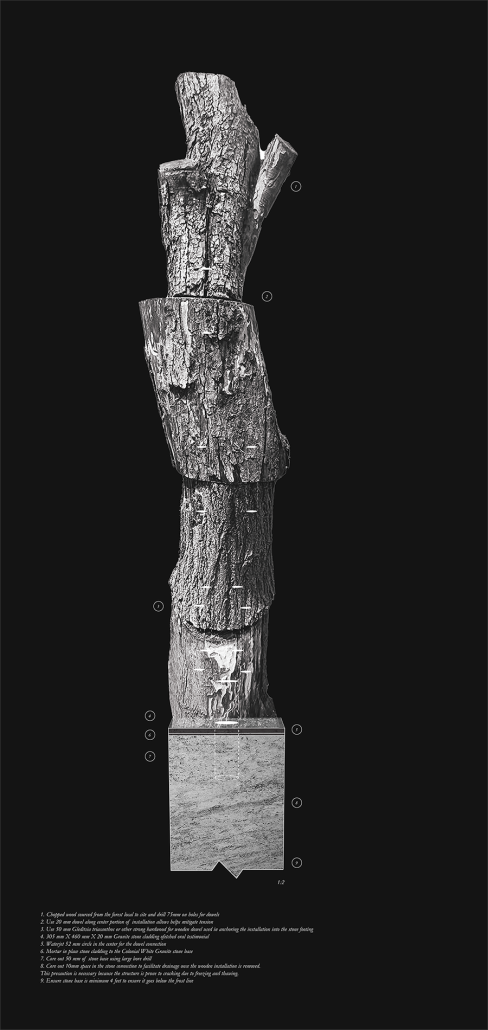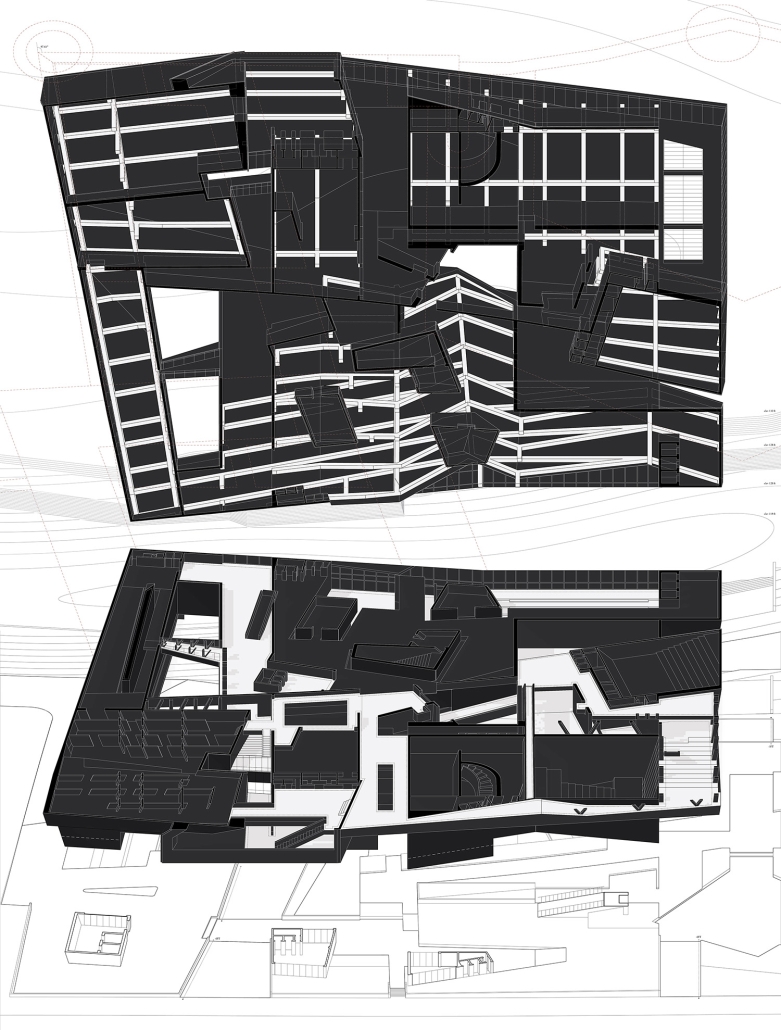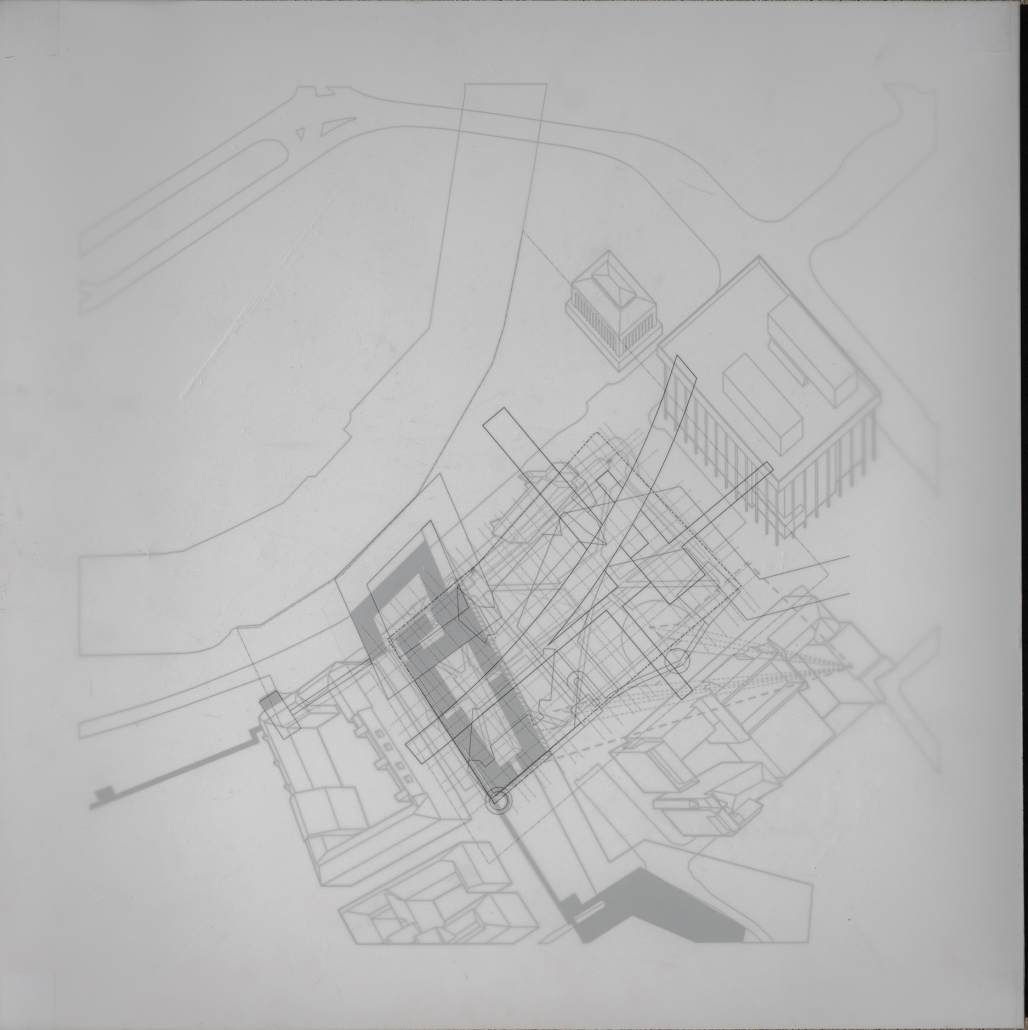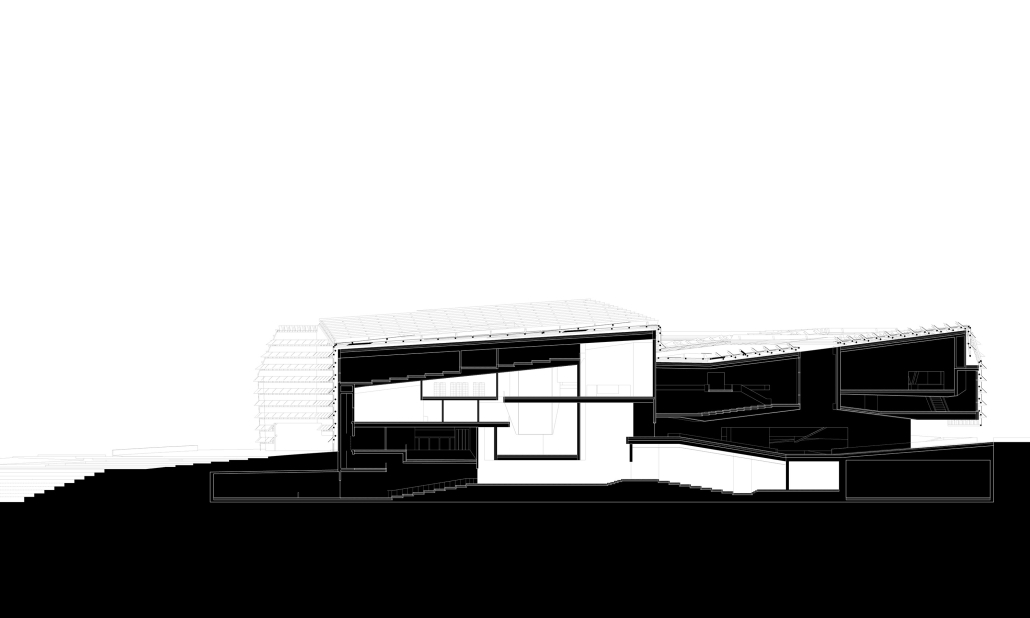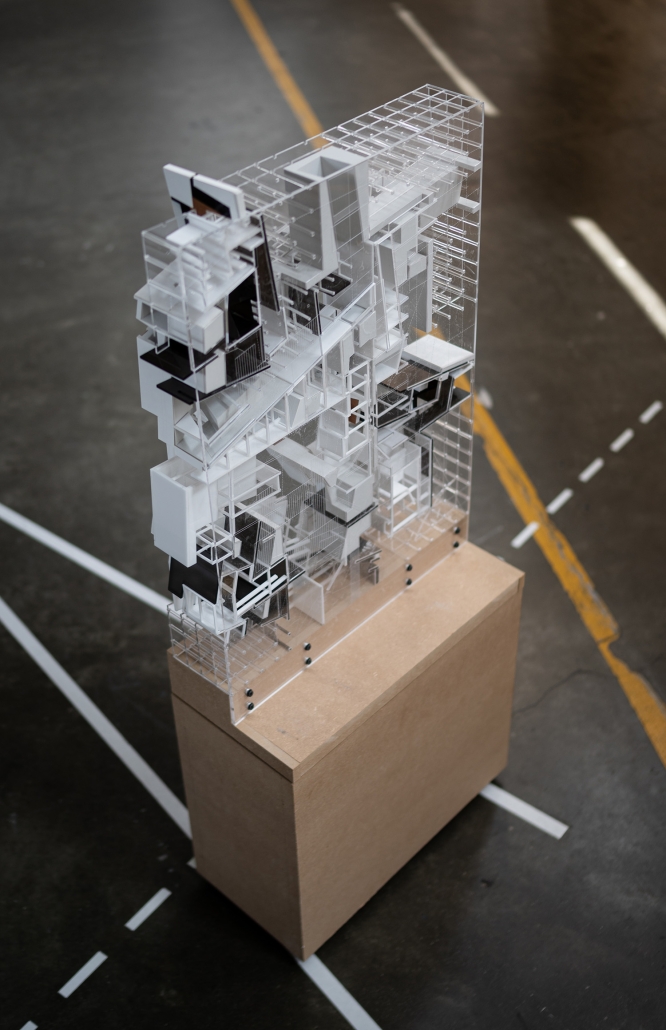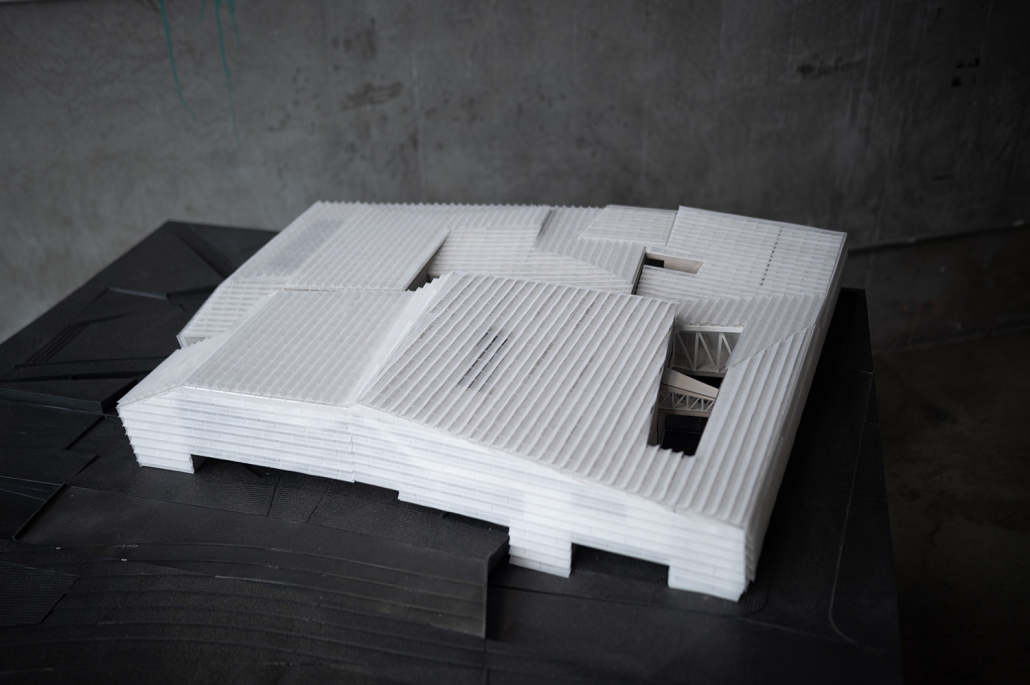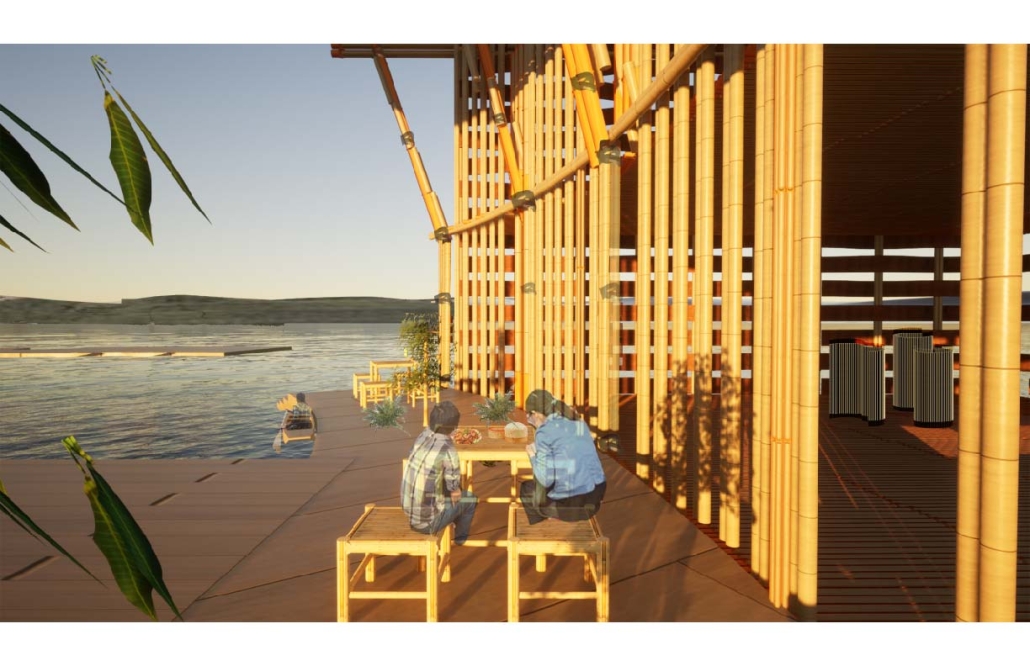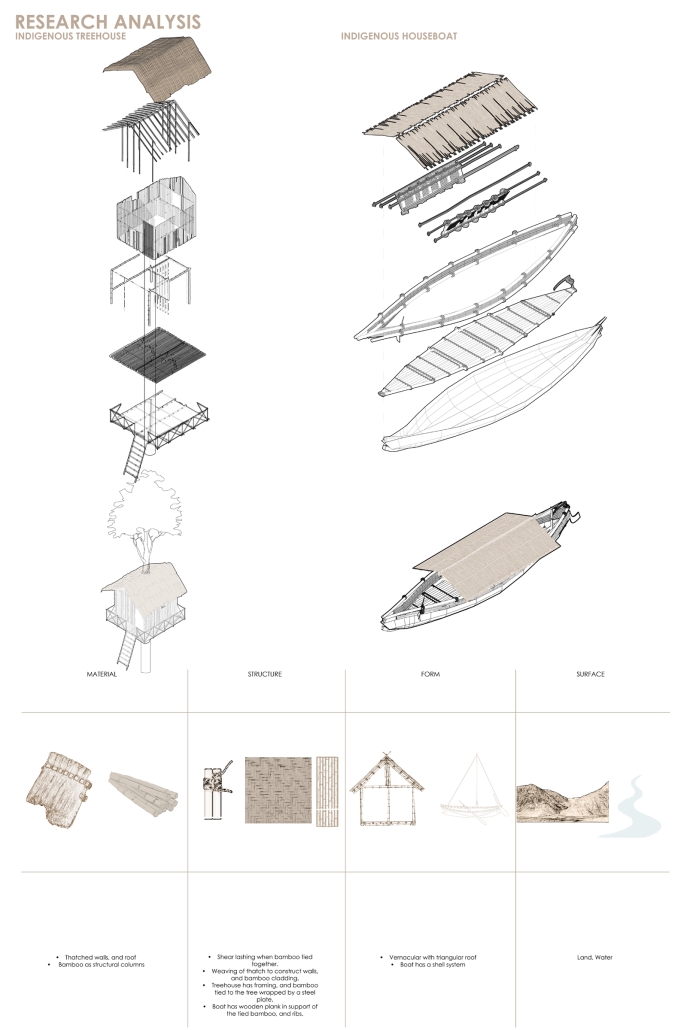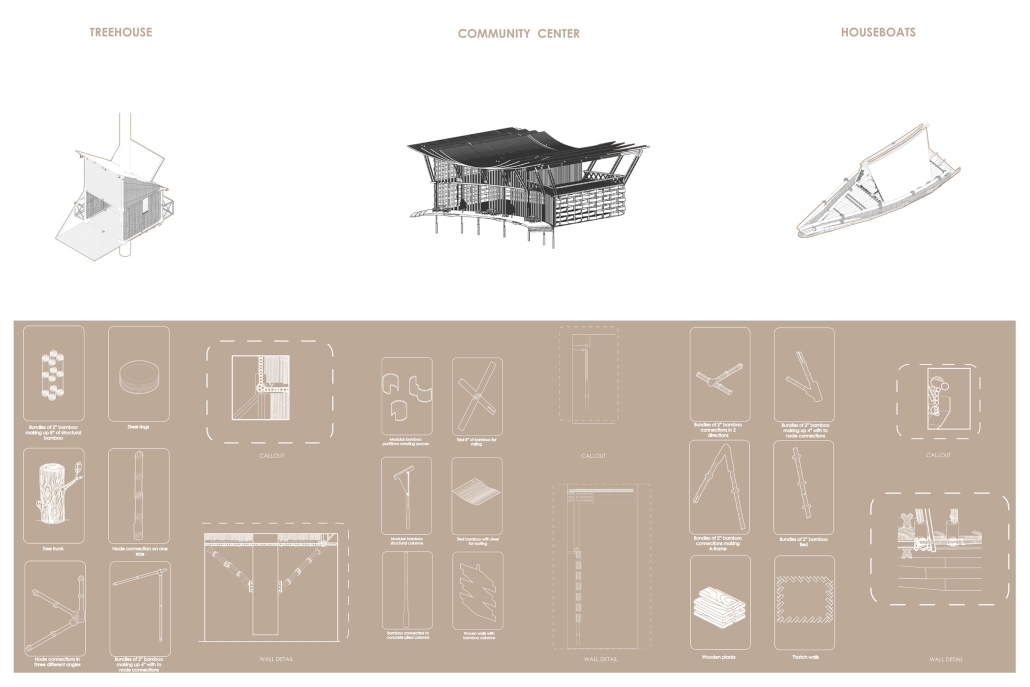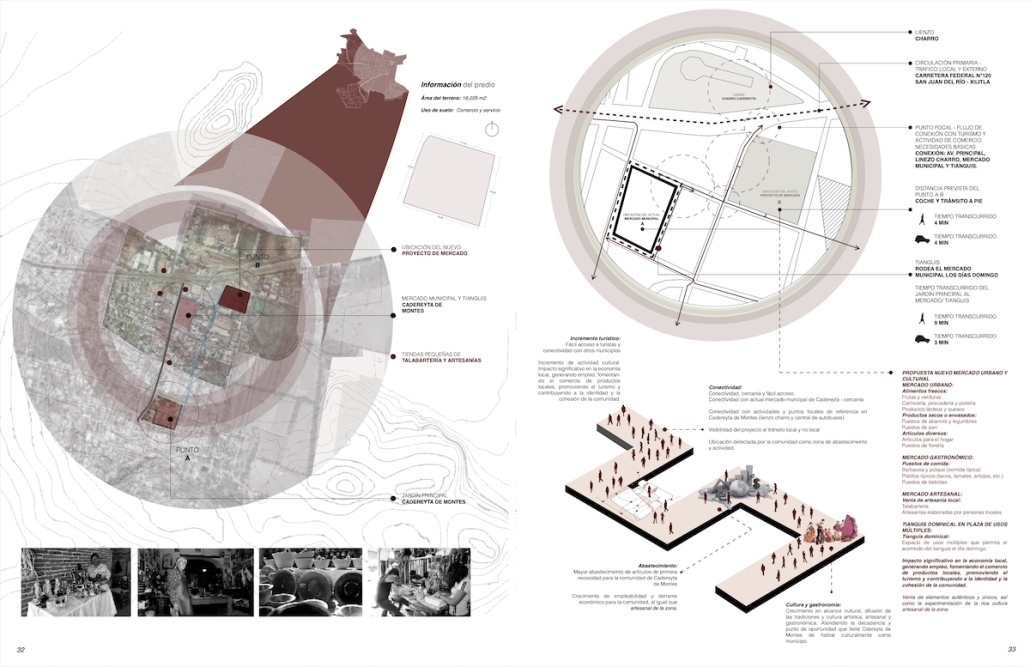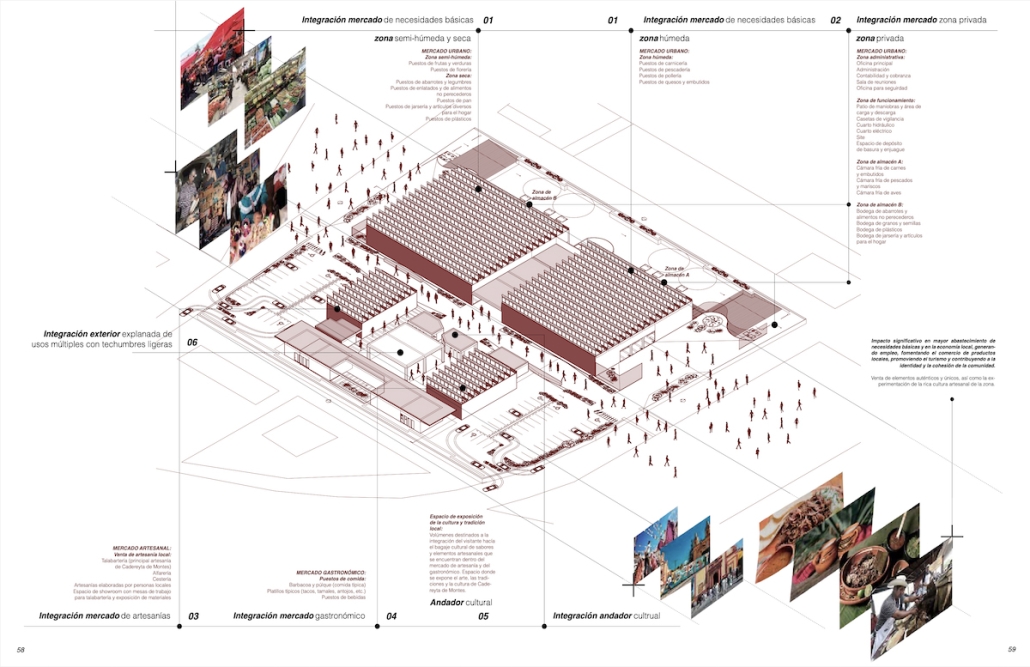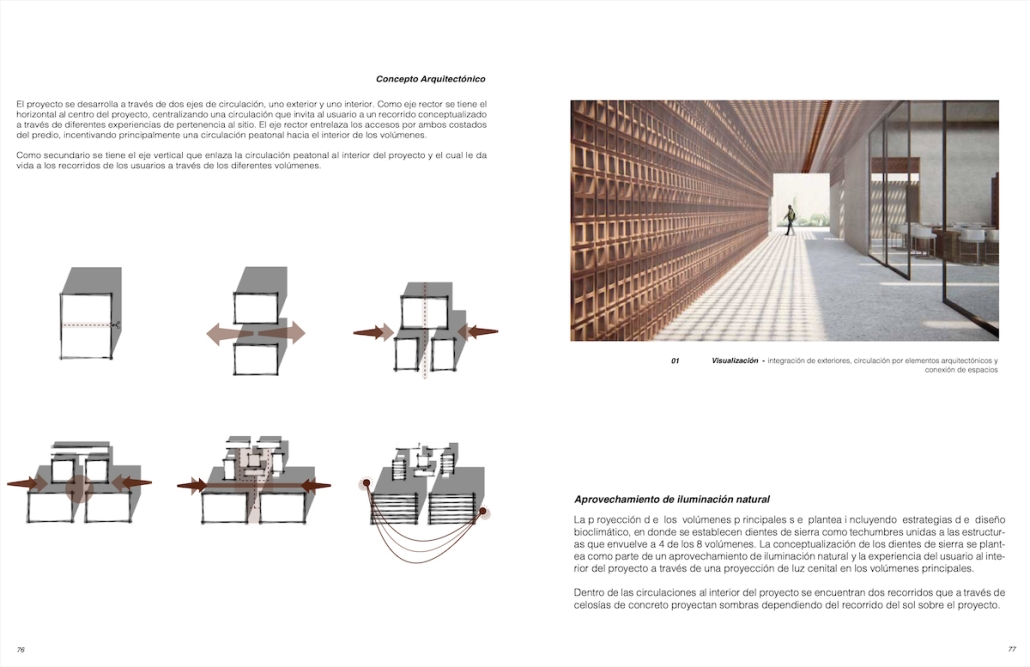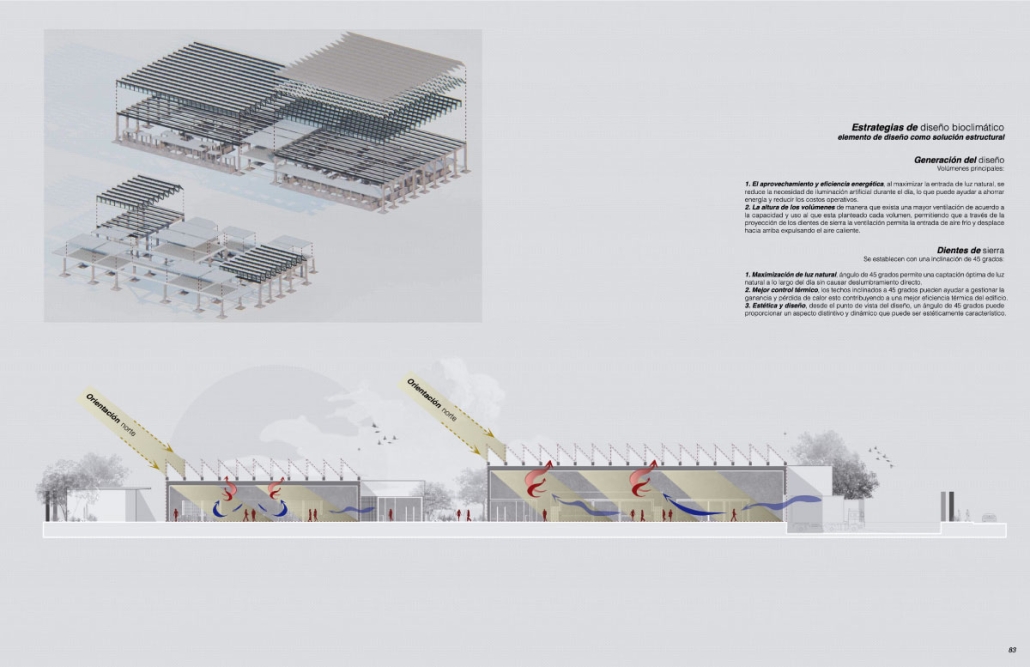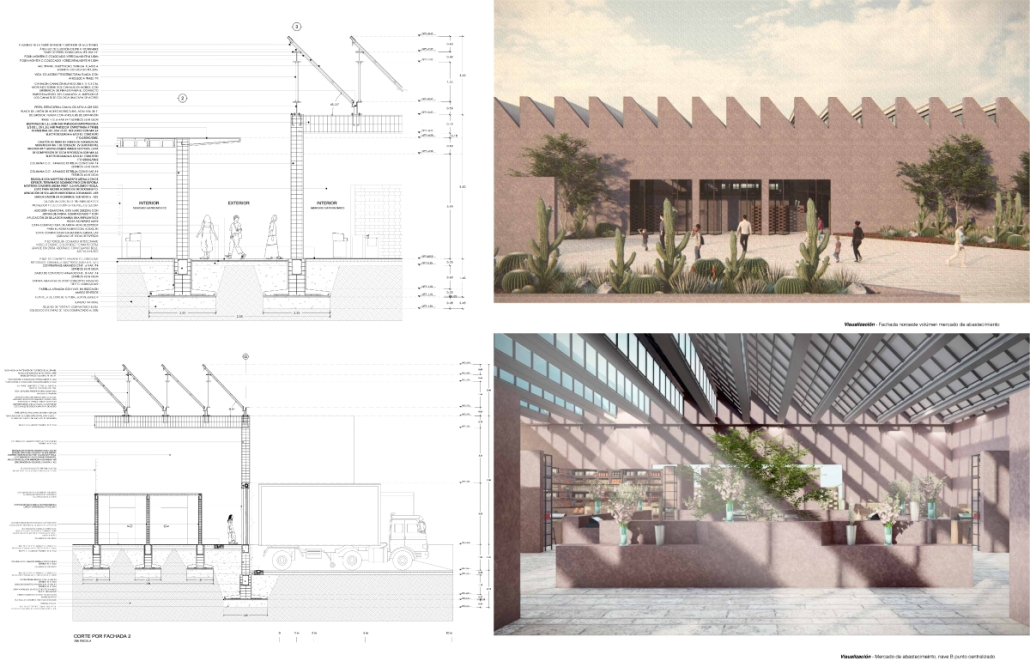2024 Study Architecture Student Showcase - Part III
Welcome to Part III of the 2024 Study Architecture Student Showcase! Today’s installment answers the question: “How can architecture serve as an avenue to celebrate and preserve cultural heritage and history?”
The award-winning student work below highlights various ways to honor history and culture. Innovative methods include using indigenous construction to promote ecotourism, illuminating transient Holocaust sites using artifacts and survivor testimonials, multi-modal exhibitions, and more. These projects also include diverse subject matters ranging from an exploration of the history of Toronto’s Caribbean Carnival to analyzing North and South Native American artifacts.
The Making of Mas’: Archiving Toronto’s Caribana by Jasmine Sykes, M. Arch ‘24
University of Toronto | Advisor: Jeannie Kim
Toronto’s Caribbean Carnival, originally known as Caribana, is an event that transforms architecture and urban experience through communication, performance, and social exchange. Originally a one-off parade for Expo ’67, Caribana has become North America’s largest cultural festival. Caribana’s impact extends beyond Toronto, with a geographic, economic, and spatial impact that is global in scale. The festival’s growth has prompted a shift in its traditions, raising concerns about its distancing from Caribbean roots. These concerns are reflected in the lack of an archive documenting Caribana’s history. This thesis advocates for the preservation and understanding of Caribana’s cultural and spatial legacy in Toronto.
Instagram: @jasmine_sykes
A Journey from Ancient Roots to Modern Revelations: Designing a Coptic Orthodox Museum & Cultural Sanctuary in the heart of Washington DC by Yostina Yacoub, M. Arch ’24
Temple University | Advisor: Prof. Sally Harrison
This thesis explores the reinterpretation of traditional Coptic architecture within the context of a contemporary museum, memorial, and community hub in the heart of Washington DC. The project aims to bridge the knowledge gap between Pharaonic Egypt and modern-day Egypt, illustrating the cultural, religious, and political shifts that have shaped the nation while narrating the story of the Copts, the indigenous people of Egypt.
Furthermore, it aims to honor the 21st-century Coptic martyrs and shed light on global Coptic persecution, serving as an educational platform for both the Coptic Diaspora and the general public, highlighting the Coptic Orthodox community’s history, faith, art, architectural heritage, and contributions.
Instagram: @yostinay
Nayala: Cultivating Architectural Memory and Identity by Ryan Saidi, M. Arch ‘24
The Catholic University of America | Advisor: Ana Maria Roman Andrino
This thesis unveils earthen chambers of memory, reflection, and hope, shaping the city’s trajectory towards renewal. In Abidjan, Cote d’Ivoire, colonialism led to architectural amnesia, obscuring precolonial heritage. The city now seeks a revival, a vibrant hub of memory to reclaim lost architectural forms for a sustainable future. Nayala emerges as this sanctuary, bridging buried traditions with emerging dreams.
This thesis was one of three to be placed on the University’s final Super Jury.
The Museum Remembering North and South Native Americans by Kelly Locklear, Bachelor of Environmental Design in Architecture ’24
NC State University | Advisor: Patricia Morgado
The Museum Remembering North and South Native Americans is located in the small town of Pembroke, NC, land of the Lumbee Tribe. The Museum holds a collection of Native American artifacts from both North and South America gathered from the Smithsonian Museum. Two artifacts are of particular interest:
– A Dugout Canoe: made by the Lumbee tribe. The entire community comes together to carve the canoe from a burnt tree. My people used canoes such as this to travel the Lumber River and to hunt fish.
– A Totem: made by the Tlingit Kiks.ádi Clan in southeast Alaska, used as a symbol to commemorate those lost in the 1804 Battle of Sitka.
It was important to approach the design taking into consideration the meaning of these artifacts as well as the best conditions to view and interact with them.
For Native American cultures, earth and sky are sacred. There are main two elements: 1) mass, representing the earth from which spaces, niches, and openings to view the artifacts are carved, and 2) plane, representing the sky, used to bound the space and transform light. To externalize the spiritual qualities of the sky to this culture, the interior of space is oriented along the astronomical north. The roof is split; one part retains the orientation of the town’s grid (N-S) while the other aligns with the astronomical north.
As the visitor approaches the entrance from the town, they are offered views into the museum through openings on the east façade. Visitors enter the museum through a vertical slit in the mass and step on a floating platform. Upon entering, they abandon the orientation of the town grid to experience the spiritual orientation of Native Americans. They are offered a view of the main pieces of the collection, the Totem and the Dugout Canoe, but cannot access them until they enter below. The path leads visitors to the final space, one of reflection of the Native American cultures and from where they can have a full view of the Totem as well as of the Lumber River where dugout canoes have been used for centuries.
This project won the 2024 AIA Triangle Student Design Award.
Instagram: @locklear.design, @patriciamorgadomaurtua
Spirit of Place through Material and Cultural Lifecycles in Ghardaïa by Sarah El Ouazzani, M. Arch ’24
McGill University | Advisor: Alan Dunyo Avorgbedor
Among dunes and oases, the vast desert spans 33% of the Earth’s surface. Within this expanse lies Ghardaïa—a city where architecture unfolds in harmony with the unhurried rhythm of the Algerian Sahara in North Africa, embodying the essence of slow architecture through its lifecycle properties. Here, the rhythms of nature and culture shape the spirit of the built environment, ensuring that architectural design blends harmoniously with its surroundings and nurtures a sustainable ethos benefitting both the community and the landscape.
The Mozabite community thrives through an architectural approach rooted in eco-centric principles, where the lifecycle properties of local materials and cultural practices seamlessly intertwine amidst Ghardaïa’s landscape. Influenced by this unique ecological environment, its architectural essence produces a unique phenomenological dimension. It fosters a distinctive cultural atmosphere that profoundly influences both the body and the mind, shaping communal existence and creating an authentic local spirit of place.
This project seeks to reclaim cultural and sustainable landscapes, transcending conceptual design to express the unique relationship between material lifecycles, culture, and embodiment in Ghardaïa. Through a multi-modal exhibitionary approach, this project curates embodied culture, crafts, and material lifecycles of the Ghardaïa natural and built environment alongside original audiovisual documentation and situated experience within an immersive installation.
In The Forest, Don’t Touch Anything by Sarah Turkenicz, MLA ’24
University of Toronto | Advisor: Liat Margolis
This thesis is about the transient history of Jews who sought refuge in the forests across Eastern Europe during the Holocaust. Unlike urban post-Holocaust sites, this history lacks enduring, tangible infrastructure and artifacts. In the forest, concealment was paramount, and any disruption of the natural environment posed an existential threat. Embedded within an evolving landscape, the remnants that do exist today are undocumented, unprotected and disappearing. Through conducting primary research of physical remnants and oral testimonials of the last living survivors, this thesis illuminates the transient nature of Holocaust sites, reshaping our perception of them not as mere collections of features, but recognizing them as landscapes.
This project won the Daniels Faculty Graduation Award – Heather M. Reisman Gold Medal in Design. The Gold Medal is awarded to the graduating student demonstrating exceptional achievement in design in architecture, landscape architecture, or urban design. It was also, submitted to the 2024 ASLA student awards.
Instagram: @uoftdaniels
Notes on a Conjectural Form* by Peihao Jin & Zamen Lin, B. Arch ’24
Southern California Institute of Architecture (SCI_Arc) | Advisor: Russell N. Thomsen
History, as we know it, is only one of many facts. Our thesis perceives history as non-linear, where there is no singular cause and effect, but a field of multiple possible interpretations. Each site therefore exists not purely in its present moment but contains an accumulation of its histories, a compounding of its past, present and future. Histories, not history. Absences, not just presence. The site of Estonia’s Tartu Cultural Center today exists as petrified pieces of something old and a living piece of something Other. Akin to a palimpsest, it comprises the memories of what once existed but also the embalming of the living present.
Our thesis proposes selecting, reading, interpreting, integrating and mediating traces embedded beyond existing contextual conditions. Aspects of excavated histories are conflated and manipulated to form a complex ecology of systems, suggesting possibilities for organization, form and tectonics. Steering clear from the literal reconstruction of history, the registration of selected histories produces a series of local reactions that inflect and deform the whole. Histories registered here are not of symbolic significance but one of multiple non-sign readings, where the sign and signified no longer exist in one-to-one relationships. This heterogeneity enables the architecture to enter into multiple relationships that refuse to settle into fixed nor stable hierarchies; an uneasy whole.
*The suggestion or reconstruction of a reading of a text not present in the original source
Instagram: @rntarch, @peihao_jin, @zamenlmh
Reviving the Lao Vernacular: Preserving Culture through Floating Communities by Juliana Viengxay, B. Arch ’24
Kennesaw State University | Advisor: M. Saleh Uddin
The goal of this project is to strengthen a community through a series of cultural activities coexisting with nature with treehouses, houseboats, and a community center through ecotourism in Laos. There has always been floating communities on land and water due to the amount of rainfall and monsoons from May to October. With a strong focus on elements such as material, form, and structure while preserving the local culture. [This project aims] to improve the economic well-being of the indigenous people while fostering symbiotic links between visitors and the land while educating tourists about the culture.
Analyzing the indigenous way of construction to understand the complexities of Laos architecture. The proposal to utilize the ease of construction is heavily emphasized with a series of connections of tied bamboo, and steel nodes. The proposal combines increased efficiency, and maintaining cultural authenticity. Research methods to support the objectives of this project is through site analysis, existing case studies, and design testing to make proper design decisions.
The project promotes skill-sharing with weaving classes and the development of craft markets and supports the existing floating market to strengthen community engagement with Lao culture. This innovative ecotourism project embraces immersive experiences and ecological methods in an effort to rebuild indigenous communities understanding their way of living. The idea behind the project is to design treehouses that in the forests and boathouses that are rooted in rivers while increasing engagement.
This project won First Place in the KSU Architecture Thesis Competition in 2024.
Mercado Urbano, Tierra y Raíz by Andrea Lomelí Ruiz, B. Arch ’24
Universidad Anáhuac Querétaro | Advisors: Alfonso Galván & Jorge Javier
This architectural project aims to redefine not only the physical landscape but also the very fabric of the community. This integral market is presented as a beacon that illuminates the possibilities of empowering and renewing the social and solidarity economy in this remote environment.
Based on the tradition, identity, character and history rooted in every corner of Cadereyta, this project emerges as an architectural manifestation that seeks to re-establish harmony with the territory and connect with the rich history that defines this locality.
Awareness, respect for the environment and history are the foundations that enable this market to become a visible and locatable symbol, an urban node that links service properties through interaction.
This integrated market is not only a transaction centre; it is an architectural response to the importance of local consumption and its benefits. It is a reminder that to truly get to know a city, one must explore its markets, understand the stories that weave through its aisles and connect with the people who pass through them.
At its core, this project seeks to restore the population’s connection to its origins, re-establishing harmony with the territory and connecting with the rich history of Cadereyta de Montes and reconnecting with its roots.
Instagram: @andrea.lomelir, @arqwave, @arquitectura_anahuac
Stay tuned for Part IV!

